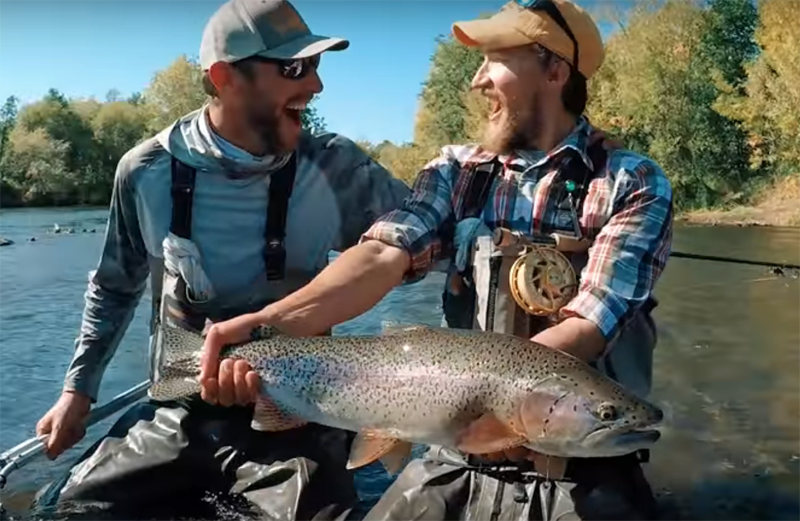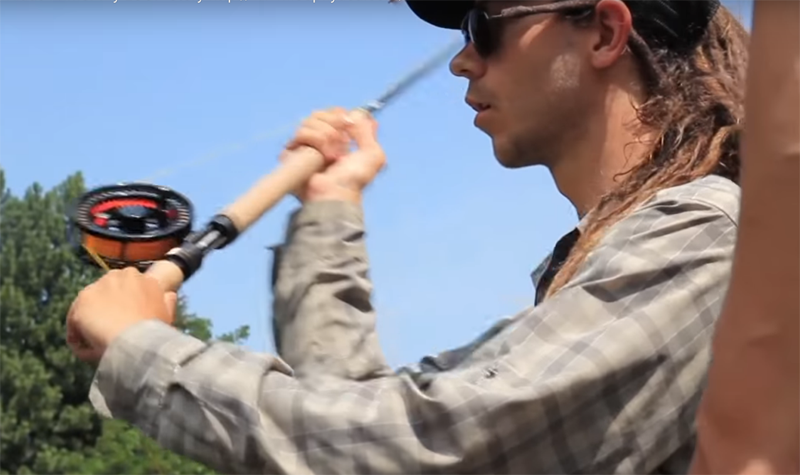
Kamchatka Fly Fishing in the Russian Far East – Sept. 2017. Screenshot of Swedish lads enjoying the oversize trouts in their neighboring Russia’s Kamchatka.
Making long casts, the thing of champions, is doable for initiates, long-suffering ordinary fly casters, as well as fly fishers physically compromised by age or medical
By Skip Clement
It’s the birth of spey casting cast. It has names like switch cast, touch and go cast, and what the author of the video below, Ken Persson, promotes with Swedish national casting champion and one-time world champion Ola Spang is the only cast you’ll ever need to know. And another world champion fly caster, Klaus Frimor, also swears it’s the only cast you’ll ever need to know.
I’m in the physically compromised camp. Both age and arthritis in my shoulders put me there. But by embracing the underhanded casting style I’m back fly fishing, and believe me, it’s a special thing to fly fish again, and remarkably, I can still cast a 100-feet when I need it.
It’s a more useful and effective cast – besting fancier named and more elegantly performed spey casts
And to break with tradition even more, that cast, the Dynamic Roll Cast can be performed on any fly rod regardless of its length – from 5-feet to up to about the limit of switch rod reality of 11-feet or a little more with the [$1,200] ultra light trout spey rods. And it would not matter if the rod was bamboo, glass, or graphite or the line type pure scandi or Skagit.

Screenshot Sameo fly Fishing Products video – Ken Persson.
The cast is one size fits all, but the presentations, two, have special performance needs
It always amazes a fly fisher with the advancements in fly lines at hand as produced and designed by RIO, Scientific Anglers, Wulff, OPST, and Airflo [principally], stick with the exhausting and inaccurate commonly taught casting techniques?
The mainline thinking on these short shooting head fly lines is that integrated lines perform in a far more friendly way than segmented lines, which “joint” separate then rejoin head and running line with loop to loop connections
Initially, the belief was that loop to loop connected heads/running lines would make easy change-outs of wallet stored heads. Reattaching a new fly line shooting head would be fast and meet new fishing conditions quickly. Better, of course, then carrying and not have to carry two rods with differently performing fly lines.
Scandi and Skagit, seems a must
Realistically, you need two types of fly lines to best perform casting using water hauls and underhanded deliveries. One for big flies and big wind, and the other – small flies landing softly without the menace of high wind. That means two rods or a long pause in fishing to switch-out 100-foot [+/-] fly lines.
What’s missing in the underhanded water haul world of fly lines is an integrated shooting head system that has reasonable performance characteristics delivering heavy flies in windy conditions. And can make pillow-soft landings of surface flies that will keep nervous trout, skittish bonefish, daisy-chaining tarpon, and salmons unperturbed.





